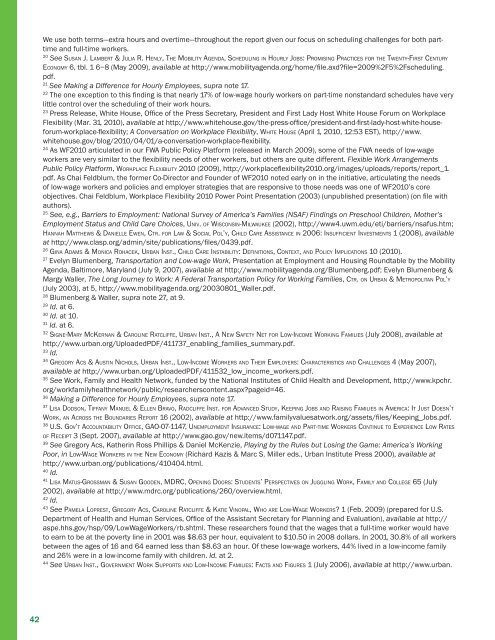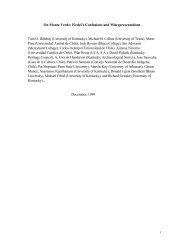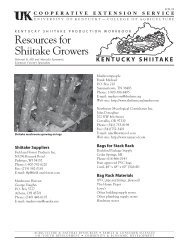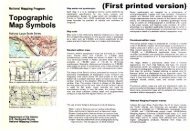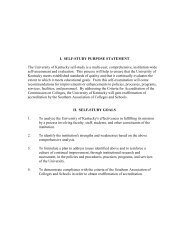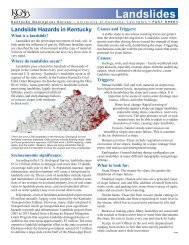Flexible Workplace Solutions for Low-Wage Hourly Workers
Flexible Workplace Solutions for Low-Wage Hourly Workers
Flexible Workplace Solutions for Low-Wage Hourly Workers
You also want an ePaper? Increase the reach of your titles
YUMPU automatically turns print PDFs into web optimized ePapers that Google loves.
We use both terms—extra hours and overtime—throughout the report given our focus on scheduling challenges <strong>for</strong> both parttime<br />
and full-time workers.<br />
20<br />
See SUSAN J. LAMBERT & JULIA R. HENLY, THE MOBILITY AGENDA, SCHEDULING IN HOURLY JOBS: PROMISING PRACTICES FOR THE TWENTY-FIRST CENTURY<br />
ECONOMY 6, tbl. 1 6–8 (May 2009), available at http://www.mobilityagenda.org/home/fi le.axd?fi le=2009%2F5%2Fscheduling.<br />
pdf.<br />
21<br />
See Making a Difference <strong>for</strong> <strong>Hourly</strong> Employees, supra note 17.<br />
22<br />
The one exception to this fi nding is that nearly 17% of low-wage hourly workers on part-time nonstandard schedules have very<br />
little control over the scheduling of their work hours.<br />
23<br />
Press Release, White House, Offi ce of the Press Secretary, President and First Lady Host White House Forum on <strong>Workplace</strong><br />
Flexibility (Mar. 31, 2010), available at http://www.whitehouse.gov/the-press-offi ce/president-and-fi rst-lady-host-white-house<strong>for</strong>um-workplace-fl<br />
exibility; A Conversation on <strong>Workplace</strong> Flexibility, WHITE HOUSE (April 1, 2010, 12:53 EST), http://www.<br />
whitehouse.gov/blog/2010/04/01/a-conversation-workplace-fl exibility.<br />
24<br />
As WF2010 articulated in our FWA Public Policy Plat<strong>for</strong>m (released in March 2009), some of the FWA needs of low-wage<br />
workers are very similar to the fl exibility needs of other workers, but others are quite different. <strong>Flexible</strong> Work Arrangements<br />
Public Policy Plat<strong>for</strong>m, WORKPLACE FLEXIBILITY 2010 (2009), http://workplacefl exibility2010.org/images/uploads/reports/report_1.<br />
pdf. As Chai Feldblum, the <strong>for</strong>mer Co-Director and Founder of WF2010 noted early on in the initiative, articulating the needs<br />
of low-wage workers and policies and employer strategies that are responsive to those needs was one of WF2010’s core<br />
objectives. Chai Feldblum, <strong>Workplace</strong> Flexibility 2010 Power Point Presentation (2003) (unpublished presentation) (on fi le with<br />
authors).<br />
25<br />
See, e.g., Barriers to Employment: National Survey of America’s Families (NSAF) Findings on Preschool Children, Mother’s<br />
Employment Status and Child Care Choices, UNIV. OF WISCONSIN-MILWAUKEE (2002), http://www4.uwm.edu/eti/barriers/nsafus.htm;<br />
HANNAH MATTHEWS & DANIELLE EWEN, CTR. FOR LAW & SOCIAL POL’Y, CHILD CARE ASSISTANCE IN 2006: INSUFFICIENT INVESTMENTS 1 (2008), available<br />
at http://www.clasp.org/admin/site/publications/fi les/0439.pdf.<br />
26<br />
GINA ADAMS & MONICA ROHACEK, URBAN INST., CHILD CARE INSTABILITY: DEFINITIONS, CONTEXT, AND POLICY IMPLICATIONS 10 (2010).<br />
27<br />
Evelyn Blumenberg, Transportation and <strong>Low</strong>-wage Work, Presentation at Employment and Housing Roundtable by the Mobility<br />
Agenda, Baltimore, Maryland (July 9, 2007), available at http://www.mobilityagenda.org/Blumenberg.pdf; Evelyn Blumenberg &<br />
Margy Waller, The Long Journey to Work: A Federal Transportation Policy <strong>for</strong> Working Families, CTR. ON URBAN & METROPOLITAN POL’Y<br />
(July 2003), at 5, http://www.mobilityagenda.org/20030801_Waller.pdf.<br />
28<br />
Blumenberg & Waller, supra note 27, at 9.<br />
29<br />
Id. at 6.<br />
30<br />
Id. at 10.<br />
31<br />
Id. at 6.<br />
32<br />
SIGNE-MARY MCKERNAN & CAROLINE RATCLIFFE, URBAN INST., A NEW SAFETY NET FOR LOW-INCOME WORKING FAMILIES (July 2008), available at<br />
http://www.urban.org/UploadedPDF/411737_enabling_families_summary.pdf.<br />
33<br />
Id.<br />
34<br />
GREGORY ACS & AUSTIN NICHOLS, URBAN INST., LOW-INCOME WORKERS AND THEIR EMPLOYERS: CHARACTERISTICS AND CHALLENGES 4 (May 2007),<br />
available at http://www.urban.org/UploadedPDF/411532_low_income_workers.pdf.<br />
35<br />
See Work, Family and Health Network, funded by the National Institutes of Child Health and Development, http://www.kpchr.<br />
org/workfamilyhealthnetwork/public/researcherscontent.aspx?pageid=46.<br />
36<br />
Making a Difference <strong>for</strong> <strong>Hourly</strong> Employees, supra note 17.<br />
37<br />
LISA DODSON, TIFFANY MANUEL & ELLEN BRAVO, RADCLIFFE INST. FOR ADVANCED STUDY, KEEPING JOBS AND RAISING FAMILIES IN AMERICA: IT JUST DOESN’T<br />
WORK, AN ACROSS THE BOUNDARIES REPORT 16 (2002), available at http://www.familyvaluesatwork.org/assets/fi les/Keeping_Jobs.pdf.<br />
38<br />
U.S. GOV’T ACCOUNTABILITY OFFICE, GAO-07-1147, UNEMPLOYMENT INSURANCE: LOW-WAGE AND PART-TIME WORKERS CONTINUE TO EXPERIENCE LOW RATES<br />
OF RECEIPT 3 (Sept. 2007), available at http://www.gao.gov/new.items/d071147.pdf.<br />
39<br />
See Gregory Acs, Katherin Ross Phillips & Daniel McKenzie, Playing by the Rules but Losing the Game: America’s Working<br />
Poor, in LOW-WAGE WORKERS IN THE NEW ECONOMY (Richard Kazis & Marc S. Miller eds., Urban Institute Press 2000), available at<br />
http://www.urban.org/publications/410404.html.<br />
40<br />
Id.<br />
41<br />
LISA MATUS-GROSSMAN & SUSAN GOODEN, MDRC, OPENING DOORS: STUDENTS’ PERSPECTIVES ON JUGGLING WORK, FAMILY AND COLLEGE 65 (July<br />
2002), available at http://www.mdrc.org/publications/260/overview.html.<br />
42<br />
Id.<br />
43<br />
See PAMELA LOPREST, GREGORY ACS, CAROLINE RATCLIFFE & KATIE VINOPAL, WHO ARE LOW-WAGE WORKERS? 1 (Feb. 2009) (prepared <strong>for</strong> U.S.<br />
Department of Health and Human Services, Offi ce of the Assistant Secretary <strong>for</strong> Planning and Evaluation), available at http://<br />
aspe.hhs.gov/hsp/09/<strong>Low</strong><strong>Wage</strong><strong>Workers</strong>/rb.shtml. These researchers found that the wages that a full-time worker would have<br />
to earn to be at the poverty line in 2001 was $8.63 per hour, equivalent to $10.50 in 2008 dollars. In 2001, 30.8% of all workers<br />
between the ages of 16 and 64 earned less than $8.63 an hour. Of these low-wage workers, 44% lived in a low-income family<br />
and 26% were in a low-income family with children. Id. at 2.<br />
44<br />
See URBAN INST., GOVERNMENT WORK SUPPORTS AND LOW-INCOME FAMILIES: FACTS AND FIGURES 1 (July 2006), available at http://www.urban.<br />
42


